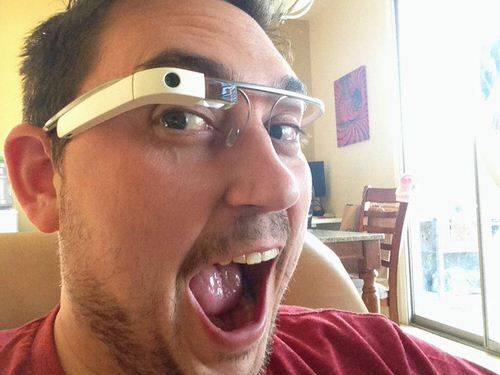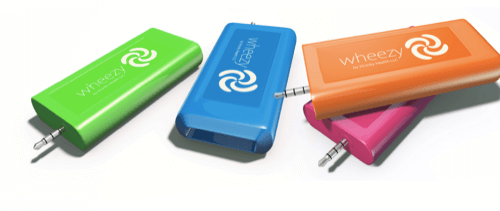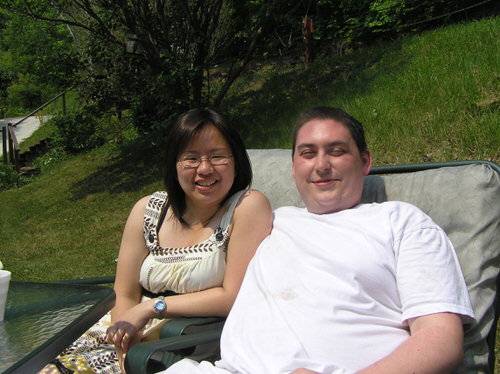Like many entrepreneurs, Chris Stiffler had an idea for a world-changing product rooted in his own experience. In his case, the experience was a serious asthma attack. The product was Wheezy, a wearable device designed to help asthmatics monitor their breathing and other factors in order to help prevent attacks.
In January, Stiffler, a friend of mine who I knew through the Phoenix-area tech community, was hospitalized after an asthma attack so severe, it took him more than two hours to drive 30 miles to the hospital. During the drive, he found himself contemplating his own death with something approaching equanimity; when he arrived, he had to scribble “asthma attack” on a receipt with a broken pen because he couldn’t pull in enough air to speak.

“All I could think was, ‘Oh shit, this is really bad and I might never see my wife or kids again’,” he wrote in a blog post two months later.
While recuperating, Stiffler banged out code for an app that would let him log his breathing data. But it was a pain to enter the numbers manually, so he began sketching ideas for Wheezy, a hardware device that would automate the process and provide warnings of likely future attacks. He built a prototype and began using it himself.
Wheezy is close to a reality; Stiffler’s startup, Vicinity Health, had planned to build the first beta models shortly. Those plans, however, are now temporarily on hold following an unexpected tragedy—Stiffler’s sudden death last week after another severe asthma attack. Wheezy had predicted the event, although its warning wasn’t enough to save its creator.
The entrepreneur, 35, leaves behind his wife, two young children and a startup that’s still catching its own breath following the passing of its founder.
Waiting To Exhale

Asthma is a chronic inflammation of the airways that can unexpectedly lead to wheezing, chest pain and shortness of breath. Long-term management is largely a matter of avoiding triggers such as cigarette smoke, using medications that relax the bronchial passages and tracking changes in breathing patterns that might signal whether asthma is worsening.
To track their lung function, asthmatics breathe into a tube attached to a spirometer, a device that measures the volume of air moving in and out of the lungs. (Simpler versions of that device are called peak flow meters.) But tracking lung function regularly is cumbersome. Some mobile apps already let patients track their respiratory information, although they typically require individuals to enter their data manually.
Stiffler conceived of Wheezy as a system that would simplify that process and much more, to the point where it could track enough data to alert a patient’s doctors should an asthma attack appear imminent. The gadget itself is a small, colorful rectangle that plugs into a smartphone’s headphone jack. Patients breathe into the other end, and an associated app records the spirometric data.
The Wheezy app can also pull in relevant data from other sources—everything from local environmental conditions to sleep and exercise patterns gleaned from other fitness apps a patient might be using. In theory, the app would crunch the numbers, apply machine learning, and gauge the likelihood of an attack.
Hacking His Way To Health
Stiffler was hospitalized for a week after the attack in January, during which time he sketched mockups of the device that would later become Wheezy. He brought them to Gangplank, a local collaborative workspace in Chandler, Ariz., that hosts “hack nights” on Wednesday evenings, and teamed up with programmer and Gangplank regular Jessie Dommert to create the first prototype. I worked at Gangplank for a while, which is how I first got to know Stiffler.
See also: Arduino’s Massimo Banzi: How We Helped Make The Maker Movement
“He needed some help with the hardware of the device, so I started helping him learn Arduino,” Dommert said, referring to the modular do-it-yourself electronics kit. “What was great about Chris was, I could tell him what he needed to do and he’d attempt to do it. Even if he couldn’t do it, he tried.”
After a handful of hack nights, Stiffler had a rough working algorithm, an API (see our API explainer) to monitor weather and other data, and a working prototype of the device built with Arduino. It was enough to start up Vicinity Health, a company founded to help people dealing with a variety of respiratory problems.
Eventually, Stiffler brought on Scott Shrake, an engineering professor at Arizona State University, and Brian Straub, a local pharmacist. The company was accepted into the Iron Yard, an accelerator program in South Carolina that partners with the Mayo Clinic.
According to Shrake, Vicinity was also in the process of closing a funding round that would cover manufacture of the first 100 devices for beta testing. Vicinity planned to price the Wheezy device between $79 and $99, and to sell the accompanying app subscription service for $9 a month.
“His last message to me was, ‘Just think, three months from now we’ll be pitching at Health 2.0‘,” Shrake told me.
Those plans are now on hold. Stiffler’s death left a hole in the fledgling company—and while Shrake and Straub are committed to continuing his vision, the circumstances have forced them to rethink the future.
“He’s irreplaceable, but we’re going to identify what the next critical steps are,” Shrake said. “We want to put together a team around it that can do it justice. We’re going to deliver, but we have to strategize.”
A Heartbreaking Irony

Asthma affects an estimated 25 million in the U.S.; nine of those die of asthma attacks every day. Stiffler may have initially thought up Wheezy as a way of monitoring his own health, but a device like his could impact millions of people around the world.
Wearable health technologies are a nascent but growing market. Companies ranging from small fitness startups to tech giants like Apple and Google are trying to figure out how to effectively use resources like apps and smartwatches to manage our health, and ultimately make wearables as ubiquitous as smartphones.
The Chandler tech community is still reeling in the wake of Stiffler’s death, but the entrepreneur’s team and family agree that he would want the project to be completed. “It’s sad that the tool he was building was working, but not working enough to prevent his death,” Dommert said.
The team still has to figure out how to patch the hole Stiffler left behind. But once prototypes have been tested, Vicinity Health will launch a crowdfunding campaign to get Wheezy on the market, and eventually, bring the lighter-sized wearables to asthma sufferers everywhere.
“My husband will be very happy if Wheezy will help anyone, even just one person,” Sandy Wu Stiffler told me in an interview. “Eventually it will be coming out—those asthma patients won’t be afraid anymore.”
Friends of Chris Stiffler are raising funds to support his family. So far, 68 donors have raised $8,642.
Images provided by a friend of Chris Stiffler










